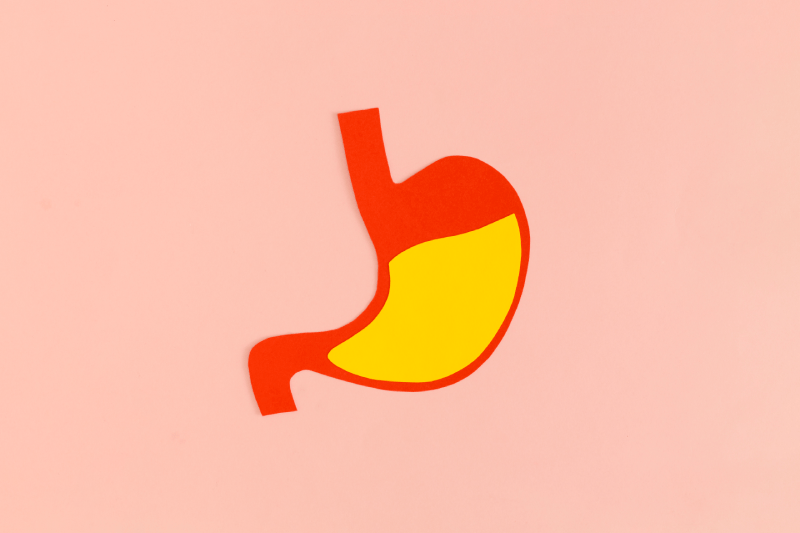Swallowable Gastric Balloon – Elipse Gastric Balloon

The elipse gastric balloon is a weight loss method that has been used frequently recently. This method, which involves inflating a surgically placed bvalon in the stomach, gives the stomach a feeling of satiety and allows the person to lose weight quickly with less food. For more detailed information about the smart gastric balloon, you can continue reading the content.
What is a Gastric Balloon?
Gastric balloon is a surgical procedure used for weight loss. This procedure, which involves a balloon placed in the stomach of the patients surgically to help them lose weight, has been used frequently in recent years. Those who cannot lose weight with adequate sports and diet can lose weight in a short time with this support procedure. With the technological development of the gastric balloon procedure, the traditional method is now used less and people can lose weight easily with the Elipse gastric balloon. You can continue reading the content to learn more about the difference between the traditional gastric balloon and the smart gastric balloon.

Who is the Gastric Balloon Suitable for?
The gastric balloon is suitable for everyone up to the age of at least 18 and 55. At the same time, the body mass index of the people who will receive the gastric balloon should be 27 and above.
How Much Weight Is Possible to Lose With a Gastric Balloon?
The answer to this question varies from person to person. This situation, which can vary depending on the patient’s diet and daily movement, generally includes losing 20% of body weight. But of course, after the operation, this will be lower for someone who does not pay attention to their nutrition and is inactive during the day. After the operation, weight loss can be more for someone who eats properly and does sports.
Gastric Balloon Procedure
Gastric balloon is a procedure that starts with the patient being put to sleep or under sedation. It involves putting the balloon in the stomach with the help of the endoscope while the patient is lying on the stretcher. The balloon, which is lowered into the stomach, is filled with a surgical fluid. Then the hprtum, which is used for filling, is removed. The operation is completed. The patient is taken to the room to rest. A few days after the procedure, the effect begins to be seen.

Gastric balloon risks
Gastric balloon is often an extremely risk-free treatment. The side effects that can be seen after the operation are nausea and some pain. Apart from this, there are no side effects. However, in some cases, the patient’s nausea may be severe and he may vomit. In such cases, the doctor should not be contacted. At the same time, although it is a very rare risk, after the operation, there may be a situation such as deflating of the balloon and passing into the digestive system. However, this is an extremely rare risk. Therefore, in general terms, it can be said that there is no risk of gastric balloon treatment.
What is a Elipse Gastric Balloon?
The smart gastric balloon is a procedure that functions the same as the traditional gastric balloon, but with a difference in placement. The smart gastric balloon involves you swallowing a deflated gastric balloon with water in the doctor’s office. The gastric balloon you swallow is inflated by the doctor with the help of a very thin tube. The process is completed by cutting the tube at the end of the inflated balloon. Thus, the patient has a stomach balloon painlessly without any anesthesia.
Differences Between Smart Gastric Balloon and Traditional Gastric Balloon
- The Traditional Gastric Balloon Requires Anesthesia.
Elipse gastric balloon does not require anesthesia.
The traditional gastric balloon is placed in the stomach by endoscopy.
The Elipse gastric balloon is swallowed with water.
After the traditional gastric balloon, the patient needs to rest for a while.
After the smart gastric balloon operation, the patient can return to his routine life.
Advantages Of Elipse Gastric Balloon
- Does not require anesthesia.
- There is no feeling of pain and suffering.
- It does not require an incision, it is not an operation.
- Does not require endoscopy.
- You can return to your normal life the next day.
- As a result of an easy process, you can reach your desired ideal weight.
- It does not require any extra intervention after the procedure.
- Elipse gastric balloon has less risk of complications compared to other gastric balloons.

How Long Does the Elipse Gastric Balloon Stay in the Stomach?
While the traditional gastric balloon can last for 6 – 12 months, the smart gastric balloon is a 4-month process. The gastric balloon is adjusted accordingly and deflates by itself at the end of 4 months. Patients who want it have to wait at least 4 more months to get this procedure again. He can then take the procedure again and continue the weight loss process.
How to Remove Elipse Gastric Balloon?
One of the best things about the procedure is that there is no need for an additional procedure to remove it. The Elipse gastric balloon is set to self-deflate after 16 weeks. Thus, it is emptied in a controlled manner at the time it should be extinguished and mixed with the stomach. The saline solution in the gastric balloon is fully compatible with the human body. Therefore, there is no harm. When the balloon starts to deflate, the patient will not feel anything. Thus, there is no need for an additional procedure to remove the balloon.
How Many Weights Is Possible to Lose With Elipse Gastric Balloon?
In this procedure, which works as well as the traditional balloon, the patient will be able to lose about 20% of their body weight. However, this depends on nutrition and sports under the control of a dietitian. For this reason, if the patient who pays attention to his nutrition shows continuity in this regard, a weight loss of more than 20% is possible. However, if the patient does not pay attention to what he eats and is inactive during the day, weight loss will not be very possible. That is, the weight the patient loses depends on the patient.
Elipse Gastric Balloon Price
The Elipse Swallowable Gastric Balloon is a fairly new technology. For this reason, it may not be available in some countries or clinics. This causes the prices to be slightly higher. However, this is of course not the case in Turkey. As for UK, USA or other countries, prices start from at least 4,000 euros. Considering the existence of more affordable countries, it is not very advantageous to take this transaction in these countries.
For this reason, you can choose Turkey, which is one of the more affordable countries for smart gastric balloon operations. Smart gastric balloon price in Turkey provides savings up to 70% compared to many other countries. Thus, patients do not have to pay extra for this disease.

Elipse Gastric Balloon Price in Turkey
In Turkey, the Elipse Gastric Balloon costs 2.000 euros for the treatment only. However, if patients want to save more money, they can choose package services for 2350 Euros, including accommodation and transportation needs. Curebooking special package content is as follows;
- 3 hours staying in hospital
- 1 Day Accommodation in a 5-star
- airport transfers
- PCR testing
- Nursing service
- Drug Treatment
Is It Safe to Get Elipse Gastric Balloon in Turkey?
Yeah. Turkey is a location frequently preferred by many foreigners for all kinds of treatment. It is certain that the prices are very affordable and that patients can get very high quality treatments at very affordable prices. The low cost of living and the high exchange rate in Turkey ensure that the purchasing power of patients is quite high. This allowed them to reduce the cost they would pay for treatments in their home country by up to 70%.
On the other hand, the doctors who provide treatment in Turkey are experienced and experts in their fields. For this reason, he knows the procedure very well and knows what to do in case of any complications. This ensures that the risk of the procedure is less than it is.









